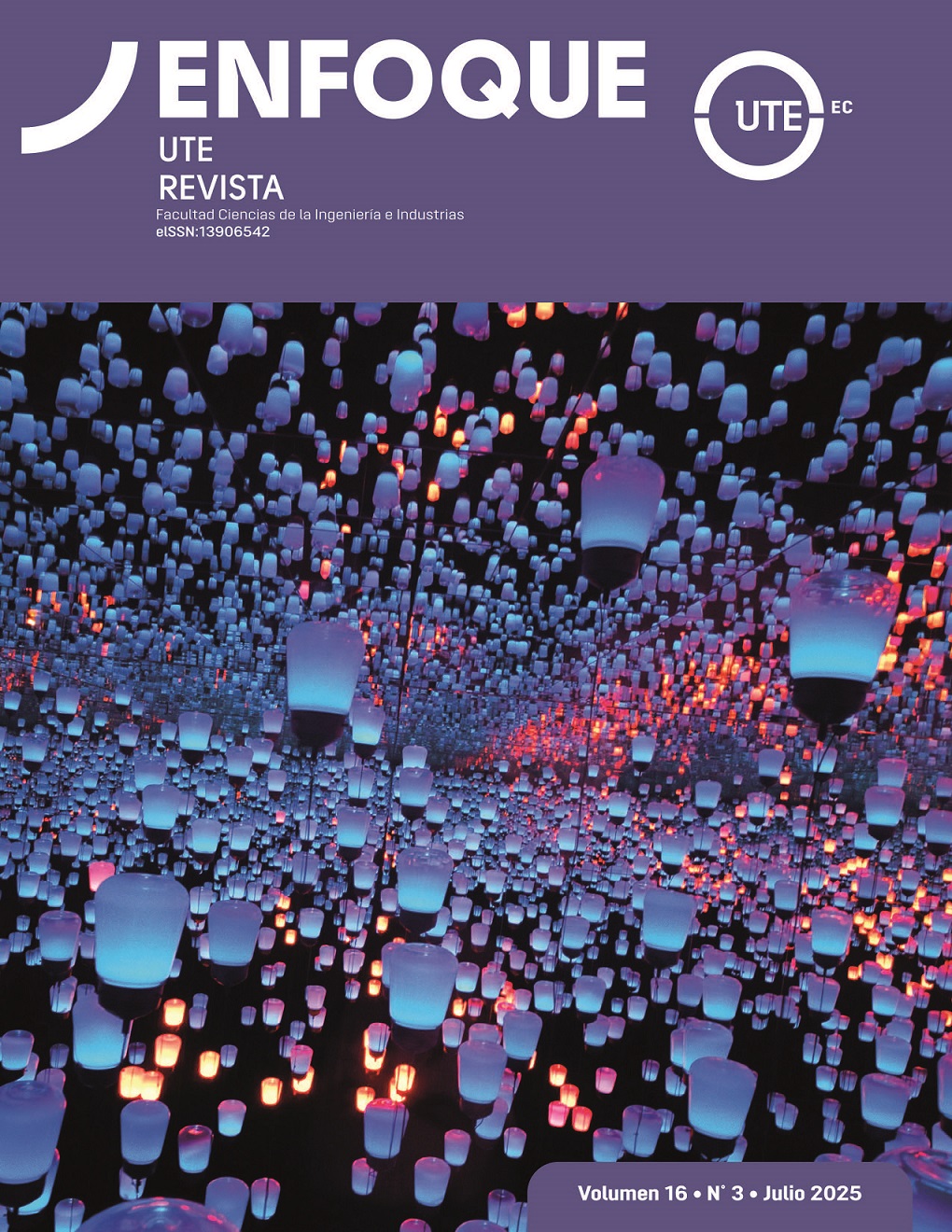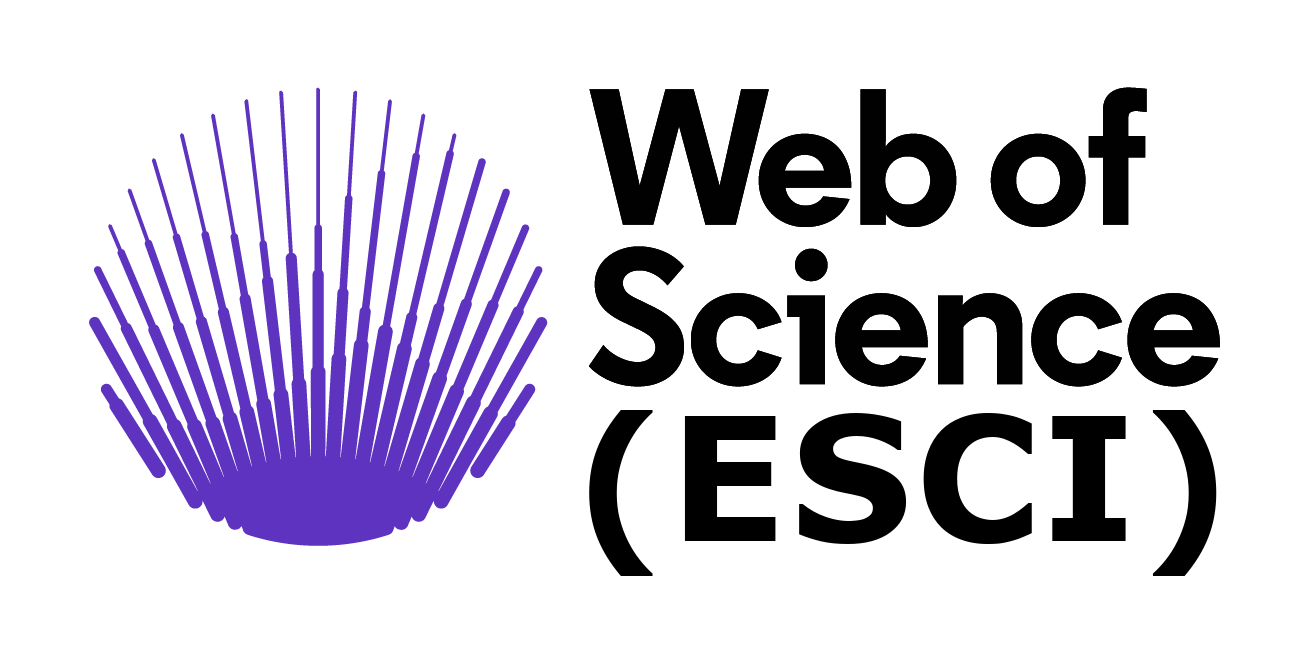Uso de carbón activado impregnado con Fe para mejorar la producción de metano de las aguas residuales del proceso de nixtamalización
DOI:
https://doi.org/10.29019/enfoqueute.1144Palabras clave:
Digestión anaerobia, agua residual, nejayote, producción de metano, materiales conductores, transferencia directa de electrones entre especiesResumen
Las aguas residuales provenientes del proceso de nixtamalización representan un reto por su composición compleja y altamente alcalina. El presente trabajo tiene como objetivo potenciar la producción de metano mediante la digestión anaeróbica de nejayote con materiales conductores a base de carbón modificado con hierro. A través de dos fases experimentales, los resultados más significativos muestran que la carga metálica en el carbón activado granular (CAG) no estimula la transferencia de electrones en un medio como el nejayote. Por otro lado, cuando el pH se mantiene en valores neutros, se obtiene una reducción del 88% en la DQO y altos valores de metano acumulado. El estudio describe la relación entre el uso del CAG y el nejayote como promotor de metano en la digestión anaeróbica, lo que puede ser una alternativa sustentable.
Descargas
Referencias
[1] Secretaría de Agricultura y Desarrollo Rural, S. (s. f.). Maíz, cultivo de México. (2023). https://www.gob.mx/agricultura/articulos/maiz-culti- vo-de-mexico#:~:text=Cultivo%20de%20ma%C3%ADz%20en%20 M%C3%A9xico,los%2032%20estados%20del%20pa%C3%ADs.
[2] Quintero-Herrera S., Rueda Avellaneda J., Zwolinski P., Evrard D., Rivas-García P. (2023). Towards a cleaner Mexican tortilla industry: a prospective life cycle assessment approach, Procedia CIRP, Volume 116, 2023, Pages 504-509, ISSN 2212-8271, https://doi.org/10.1016/j. procir.2023.02.085.
[3] M. v. Espejel-García, J.S. Mora-Flores, J.A. García-Salazar, S. Pérez Elizalde, R. García-Mata, Caracterización del consumidor de tortilla en el Estado de México, Agricultura Sociedad y Desarrollo. 13 (2016) 371. https://doi.org/10.22231/asyd.v13i3.401.
[4] Valenzuela E., Gutiérrez-Uribe J., Franco-Morgado M., Cervantes- Avilés P. (2024). Navigating the waters of nixtamalization: Sustaina- ble solutions for maize-processing wastewater treatment, Science of The Total Environment, Volume 911, 2024, 168674, ISSN 0048-9697, https://doi.org/10.1016/j.scitotenv.2023.168674.
[5] Paredes López, O., Guevara Lara, F., & Bello Pérez, L. A. (2010). La nixtamalización y el valor nutritivo del maíz. Ciencias, 92(092). Recuperado a partir de https://www.revistas.unam.mx/index.php/cns/ article/view/14831.
[6] Teresa Zayas, Alejandra de Gante, María Guadalupe Tenorio Arvide, Miriam Vega Hernández, Guillermo Soriano-Moro, Leonardo Salga- do, Treatment of nixtamalization wastewater (nejayote) using electro- coagulation and combined chemical coagulation/electrocoagulation processes, Desalination and Water Treatment, Volume 280, 2022, Pa- ges 44-51, ISSN 1944-3986, https://doi.org/10.5004/dwt.2022.29113.
[7] Martínez-Bustos, F., Martínez-Flores, H. E., Sanmartín-Martínez, E., Sánchez-Sinencio, F., Chang, Y. K., Barrera-Arellano, D., & Rios,
E. (2001). Effect of the components of maize on the quality of masa and tortillas during the traditional nixtamalisation process. Journal of the Science of Food and Agriculture, 81(15), 1455–1462. https://doi.org/10.1002/jsfa.963
[8] Velasco-Martinez M, Angulo O, Vazquez-Couturier DL, Arroyo-Lara A, Monroy-Rivera JA. Effect of dried solids of nejayote on broiler growth. Poult Sci. 1997 Nov;76(11):1531-4. https://doi.org/10.1093/ ps/76.11.1531.
[9] Salmerón-Alcocer, A., Rodríguez-Mendoza, N., Pineda-Santiago, V., Cristiani-Urbina, E., Juárez-Ramírez, C., Ruiz-Ordaz, N., & Galíndez- Mayer, J. (2003). Aerobic treatment of maize-processing wastewater (nejayote) in a single-stream multi-stage bioreactor. Journal of En- vironmental Engineering and Science, 2(5), 401-406. https://doi.org/10.1139/s03-046
[10] Díaz-Montes, E., Castro-Muñoz, R., & Yáñez-Fernández, J. (2016). An overview of nejayote, a nixtamalization by product. Ingeniería Agrícola y Biosistemas, 8(2), 41-60. https://doi.org/10.5154/r.inag- bi.2016.03.002
[11] España-Gamboa, E., Domínguez-Maldonado, J.A., Tapia-Tussell, R. et al. Corn industrial wastewater (nejayote): a promising substrate in Mexico for methane production in a coupled system (APCR-UASB). Environ Sci Pollut Res 25, 712–722 (2018). https://doi.org/10.1007/ s11356-017-0479-z
[12] Román-Escobedo, L.C.; Cristiani-Urbina, E.; Morales-Barrera, L. Bioremediation with an Alkali-Tolerant Yeast of Wastewater (Nejayo- te) Derived from the Nixtamalization of Maize. Fermentation 2024, 10, 219. https://doi.org/10.3390/fermentation10040219
[13] Meraz, K. A. S., Vargas, S. M. P., Maldonado, J. T. L., Bravo, J. M. C., Guzman, M. T. O., & Maldonado, E. A. L. (2016). Eco-friendly in- novation for nejayote coagulation–flocculation process using chitosan: Evaluation through zeta potential measurements. Chemical Enginee- ring Journal, 289, 536-542. https://doi.org/10.1016/j.cej.2015.09.026.
[14] Khanh Nguyen, V., Kumar Chaudhary, D., Hari Dahal, R., Hoang Trinh, N., Kim, J., Chang, S. W., … Nguyen, D. D. (2021). Review on pretreatment techniques to improve anaerobic digestion of sewage sludge. Fuel, 285, 119105. https://doi.org/10.1016/j.fuel.2020.119105
[15] Campos-Flores, R.C.; Reyna-Gómez, L.M.; Suárez-Vázquez, S.I.; Ro- bledo-Olivo, A.; Cruz-López, A. Effect of Inoculum Pretreatment and Operational Mode of Reactor on BioH2 Production from Nixtamaliza- tion (Nejayote) and Abattoir Wastewater. Waste Biomass Valor. 2023, 15, 2145–2158.
[16] Rotaru AE, Shrestha PM, Liu F, et al (2014) Direct interspecies electron transfer between Geobacter metallireducens and Methanosarcina bar- keri. Appl Environ Microbiol 80:4599–4605. https://doi.org/10.1128/ AEM.00895-14
[17] Fang, Z., Huang, Y., Tang, S. et al. Direct interspecies electron transfer for environmental treatment and chemical electrosynthesis: A review. Environ Chem Lett 22, 3107–3133 (2024). https://doi.org/10.1007/ s10311-024-01774-8
[18] Kato S, Hashimoto K, Watanabe K (2012) Methanogenesis facilita- ted by electric syntrophy via (semi)conductive iron-oxide minerals. Environ Microbiol 14:1646–1654. https://doi.org/10.1111/j.1462- 2920.2011.02611.x
[19] Burboa Charis, V. A., Orrantia López, M., & Alvarez Valencia, L.
H. (2023). Electron transfer via conductive materials and their im- pact on the anaerobic methane production. Entreciencias: Diálogos En La Sociedad Del Conocimiento, 11(25), 1–17. DOI: https://doi.org/10.22201/enesl.20078064e.2023.25.85046
[20] Armenta MA, Maytorena VM, Buentello-Montoya DA, Arroyo E, Cota-Leal M, Yong D, et al. Effect of catalytic hydrodynamics over microagglomerates of Mn2O3 and PdO supported on γ-χ-Al2O3 for dimethyl ether production. Fuel 2022;317: 123509.
[21] Lin CY, Lay CH. Effects of carbonate and phosphate concentrations on hydrogen production using anaerobic sewage sludge microflora. Int J Hydrogen Energy. 2004;29(3):275-281. https://doi.org/10.1016/j. ijhydene.2003.07.002
[22] Argun, M. S., & Argun, M. E. (2017). Treatment and alternative usage possibilities of a special wastewater: Nejayote. Journal of Food Pro- cess Engineering, 41(1), e12609. https://doi.org/10.1111/jfpe.12609
[23] Wang S, Yuan R, Liu C, Zhou B. Effect of Fe2+ adding period on the biogas production and microbial community distribution during the dry anaerobic digestion process. Process Saf Environ Prot. 2020 Jan 1;136:234–41. https://doi.org/10.1016/j.jenvman.2022.116783
[24] Zhang, W., Wu, S., Guo, J., Zhou, J., & Dong, R. (2015). Performance and kinetic evaluation of semi-continuously fed anaerobic digesters treating food waste: Role of trace elements. Bioresource Technology, 178, 297–305. https://doi.org/10.1016/j.biortech.2014.08.046
[25] Wei, Q., Zhang, W., Guo, J., Wu, S., Tan, T., Wang, F., & Dong, R. (2014). Performance and kinetic evaluation of a semi-continuously fed anaerobic digester treating food waste: Effect of trace elements on the digester recovery and stability. Chemosphere, 117, 477–485. https:// doi.org/10.1016/j.chemosphere.2014.08.060
[26] Orrantia, Miriam, Armenta, M.A., Alvarez, Luis H., Burboa-Charis, Vianey A.,Meza-Escalante, Edna R., Olivas, A., Arroyo, E., Maytore- na, V.M. (2024). Enhanced methane production via anaerobic diges- tion assisted with Fe3O4 nanoparticles supported on microporous gra- nular activated carbon, Fuel, Volume 360,130517, ISSN 0016-2361, https://doi.org/10.1016/j.fuel.2023.130517.
[27] Jiaji Sun, Eldon R. Rene, Yuhe He, Weifang Ma, Qian Hu, Bin Qiu (2023). Carbon, iron, and polymer-based conductive materials for improving methane production in anaerobic wastewater treatment sys- tems: A review on their direct interspecific electron transfer mecha- nism, Fuel, Volume 342, 2023, 127703, ISSN 0016-2361, https://doi.org/10.1016/j.fuel.2023.127703.
[28] Watanabe, K. (2008) Recent Developments in Microbial Fuel Cell Technologies for Sustainable Bioenergy. Journal of Bioscience and Bioengineering, 106(6), 528–536. [online] http://dx.doi.org/10.1263/ jbb.106.528.
[29] Pham, T. H., Aelterman, P., & Verstraete, W. (2009). Bioanode per- formance in bioelectrochemical systems: recent improvements and prospects. Trends in Biotechnology, 27(3), 168–178. https://doi.org/10.1016/j.tibtech.2008.11.005
[30] Gulizhaer Abulikemu, David G. Wahman, George A. Sorial, Mallikar- juna Nadagouda, Eva K. Stebel, Erika A. Womack, Samantha J. Smith, Eric J. Kleiner, Brooke N. Gray, Rose D. Taylor, Cameron X. Gastaldo, Jonathan G. Pressman, Role of grinding method on granular activa- ted carbon characteristics, Carbon Trends, Volume 11, 2023, 100261, ISSN 2667-0569, https://doi.org/10.1016/j.cartre.2023.100261.
[31] Zhao, Z., Li, Y., Quan, X., & Zhang, Y. (2017). Towards engineering application: Potential mechanism for enhancing anaerobic digestion of complex organic waste with different types of conductive materials. Wa- ter Research, 115, 266–277. https://doi.org/10.1016/j.watres.2017.02.067
[32] Gahyun Baek, Jinsu Kim, Changsoo Lee, A review of the effects of iron compounds on methanogenesis in anaerobic environments, Re- newable and Sustainable Energy Reviews, Volume 113, 2019, 109282, ISSN 1364-0321, https://doi.org/10.1016/j.rser.2019.109282.
[33] Molnar, L., & Bartha, I. (1989). Factors influencing solid-state anaerobic digestion. Biological Wastes, 28(1), 15-24. https://doi.org/10.1016/0269-7483(89)90045-1
[34] LIU, C., YUAN, X., ZENG, G., LI, W., & LI, J. (2008). Prediction of methane yield at optimum pH for anaerobic digestion of organic fraction of municipal solid waste. Bioresource Technology, 99(4), 882–888. https://doi.org/10.1016/j.biortech.2007.01.013
[35] Xu, S., He, C., Luo, L., Lü, F., He, P. y Cui, L. (2015). Comparing Activated Carbono f Different Particle Sizes on Enhancing Methane Generation in Upflow Anaerobic Digester. Bioresource Technology, 196. 606-612. http://dx.doi.org/10.1016/j.biortech.2015.08.018.
[36] Peng, H., Zhang, Y., Tan, D., Zhao, Z., Zhao, H., & Quan, X. (2018). Roles of magnetite and granular activated carbon in improvement of anaerobic sludge digestion. Bioresource Technology, 249, 666–672. https://doi.org/10.1016/j.biortech.2017.10.047
[37] Lee, J., Lee, S., and Park, H. (2016) Bioresource Technology Enri- chment of specific electro-active microorganisms and enhancement of methane production by adding granular activated carbon in anaerobic reactors. BIORESOURCE TECHNOLOGY, 205, 205–212. http://dx.doi.org/10.1016/j.biortech.2016.01.054.
[38] Yang Y, Zhang Y, Li Z, et al (2017) Adding granular activated car- bon into anaerobic sludge digestion to promote methane production and sludge decomposition. J Clean Prod 149:1101–1108. https://doi.org/10.1016/J.JCLEPRO.2017.02.156
[39] Bhatt, A. H., & Tao, L. (2020). Economic Perspectives of Biogas Pro- duction via Anaerobic Digestion. Bioengineering, 7(3), 74. https://doi.org/10.3390/bioengineering7030074
[40] Mou, A., Yu, N., Yang, X., & Liu, Y. (2024). Enhancing methane production and organic loading capacity from high solid-content was- tewater in modified granular activated carbon (GAC)-amended up-flow anaerobic sludge blanket (UASB). Science of the Total Environment, 906, 167609. https://doi.org/10.1016/j.scitotenv.2023.167609
[41] Gallert, C., and Winter, J. 2008. Propionic acid accumulation and degradation during restart of a full-scale anaerobic biowaste digester. Bioresour. Technol. 99(1): 170–178. https://doi.org/10.1016/j.bior-tech.2006.11.014.
Descargas
Publicado
Número
Sección
Licencia
Derechos de autor 2025 Vianey Ariadna Burboa Charis, Margarita Sarai Escalante Torres, Miguel A. Armenta, Lourdes M. Tenorio Diaz, Luis A. Leyva Soto, Ángel R. Meza, Luis H. Álvarez

Esta obra está bajo una licencia internacional Creative Commons Atribución 4.0.
Los autores retienen todos sus derechos (© copyright).
- Los autores retienen sus derechos de marca y patente, y también sobre cualquier proceso o procedimiento descrito en el artículo.
- Los autores retienen el derecho de compartir, copiar, distribuir, ejecutar y comunicar públicamente el artículo publicado en Enfoque UTE (por ejemplo, colocarlo en un repositorio institucional o publicarlo en un libro), siempre que se dé el reconocimiento de su publicación inicial en la revista Enfoque UTE.
- Los autores retienen el derecho a hacer una posterior publicación de su trabajo, de utilizar el artículo o cualquier parte de aquel (por ejemplo: una compilación de sus trabajos, notas para conferencias, tesis, o para un libro), siempre que indiquen la fuente de publicación (autores del trabajo, revista, volumen, número y fecha).
























